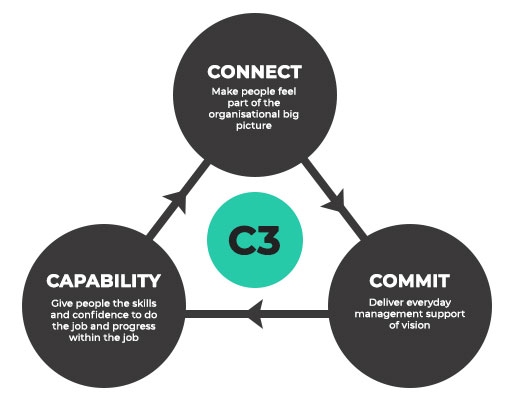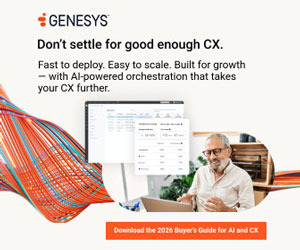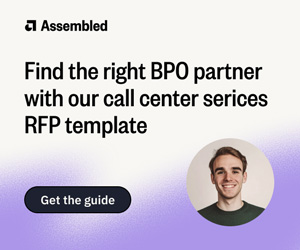Typically call centres focus on engaging with their customers. Indeed, some are so focused on customers that they don’t actually think about engaging with their staff.
Yet, as Jo Thomson finds out, engaged agents – people who really embrace the concept of good customer service – are going to be far better placed to offer great experiences to the people on the end of the phone than those who haven’t bought into the idea.
We’re sure you’ve experienced the cycle a few times in your career: those occasions when senior managers buy into changing a customer experience and invest in a change initiative, but once the initial excitement has died down, the old habits return, tricky new things get forgotten and everyone returns to their comfort zone.
The problem is that, in the world of call centres, we’re under constant pressure to deliver better engagement externally – to our community of customers.
Internal engagement resultantly gets less commitment, resources and management time than it deserves. Yet without this internal care, we cannot take our frontline people with us when we change.
The good news is that there’s a way of looking at internal culture that has a proven track record of ending this frustrating cycle. It can be summarised as the ‘three C’s’ : Connection, Commitment and Capability (see diagram below).
But just how can you make the three C’s work for you? Here, we’ve looked at each ‘C’ in detail – outlining how each one fits into the next.

Connection
The start point is ensuring all staff feel connected to the organisational big picture. Highly motivational team events can start the ball rolling, but key to maintaining a connection is line management.
- Advisors need to be reminded why they are there and have an insight into the value of what they do – rather than feeling like a ‘bum on a seat’
- The big picture and ‘reason for being’ needs to be constantly reinforced through every management action
- Process, technology and service agreements need to be focused on the desired customer experience rather than being designed in isolation by back room process teams, designers or isolated managers
As an example, Lloyds TSB asset finance collections team has done a great job connecting advisor performance with its big picture/reason for being.
Rather than focusing solely on cash collected – which drove fairly anonymous, disconnected behaviour – the team focused on ensuring its front-line advisors connected with the idea of engaging with customers, finding solutions and helping people get out of debt easily and quickly. This connection with the customer paid dividends in improved productivity.
Once a connection like this – between advisor performance and the organisation’s goals – has been made, you need to inspire your people to put in the hard work change might need.
Commitment
Perhaps the biggest recent shift in commitment has been leadership behaviour in the public sector. There are many great stories we could tell about councils, local authorities and emergency services becoming more customer/citizen focused.
In order to drive internal commitment, all levels of management need to deliver clear vision, belief and effective leadership.
For example:
- Managers need to think of supporting overall goals on every interaction rather than going through the motions – that is, ticking quality forms or filling in spreadsheets
- Managers need to get out of their offices or away from their desks and both talk to and coach their people
Ask yourself: what’s special about your company?
We’ve seen people who traditionally managed from behind a screen or by spreadsheet lead by example and demonstrate commitment to change by doing it themselves first.
Cambridgeshire Constabulary, for example, climbed up the satisfaction rankings after its move to focus on the citizen and we believe this was primarily due to changes in leadership behaviour.
Finally, you need to give connected and committed people the skills they need. Not only that; you also need to give them the opportunity to use and develop these skills.
Be in a position to answer the question: “What’s in it for me?” Offer your people a fair and rewarding benefits package and a career growth plan.
Capability
The final ‘C’ is all about capability. Why? Because you need to allow people to do their jobs well, reward them well for what they do, and have a clear journey for developing them both within the job and beyond.
Here are some pointers:
- Fair pay for a job well done will drive effective performance. It’s not only about efficiency or ‘hitting the numbers’
- Any reward and recognition needs to be driven by the desire to do a good job for the customer and each other rather than a perceived desire for an extra few pounds
Examples of this working well include npower, which has worked tirelessly over the past ten years to drive more effective capability – not an easy challenge with 2,500 staff, and Barclays Business Banking at Gadbrook Park, which has already achieved European Contact Centre of the Year status (2005 and 2007). Both companies are widely known for truly delivering a ‘people first’ strategy.
It’s about looking after your people. In turn they will look after your customers.
Contributed by: Jo Thomson, Managing Director at training and change management business The Procter Consultancy
For more information on getting staff buy in, read these articles next:
- How to Ensure Agents Love Your Products and Services
- How to Get Advisors to Buy In to Your Quality Assurance Programme
- How to Change Your Shift Patterns – Without Losing Your Best Agents!
Author: Jo Thomson
Reviewed by: Robyn Coppell
Published On: 11th Feb 2008 - Last modified: 10th Sep 2025
Read more about - Call Centre Management, Call Centre Answers, Customer Experience (CX), Jo Thomson, Management Strategies










































